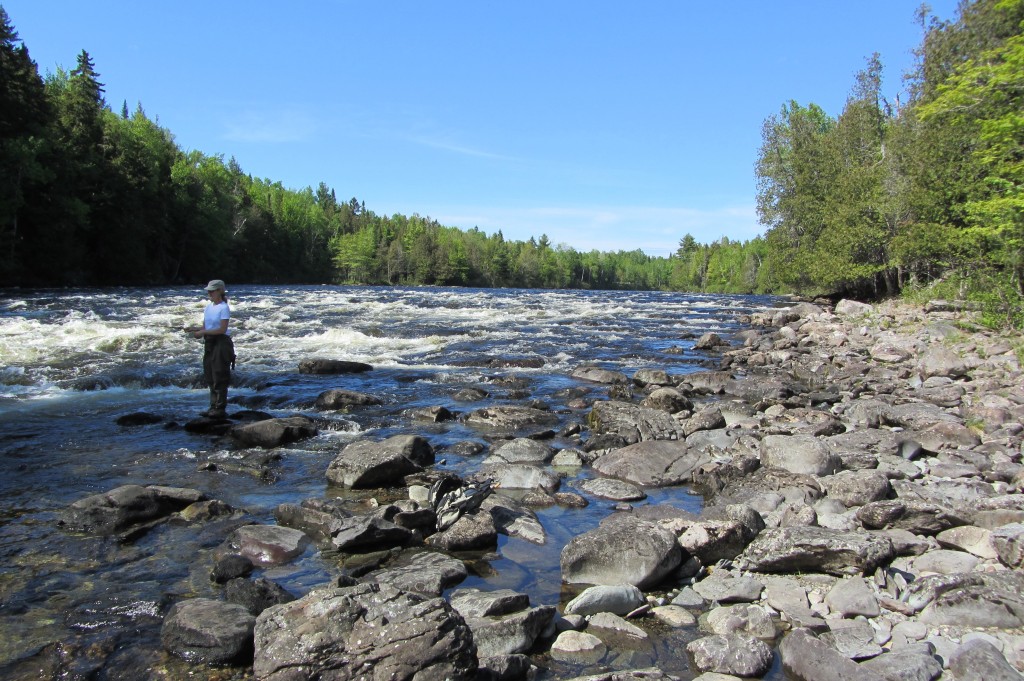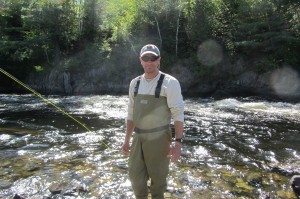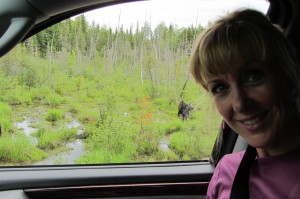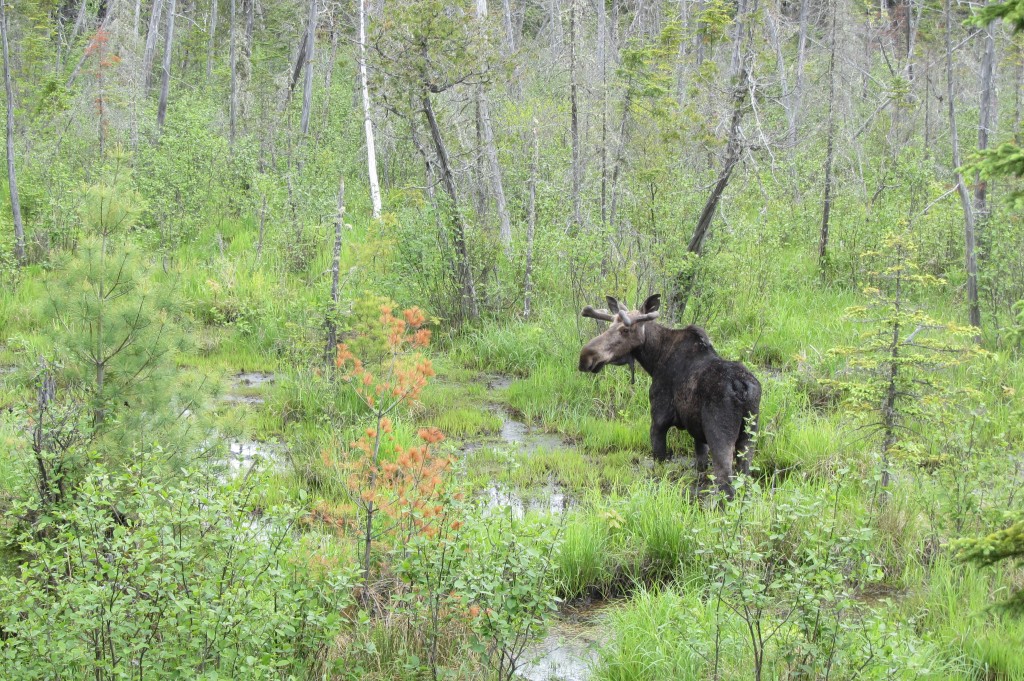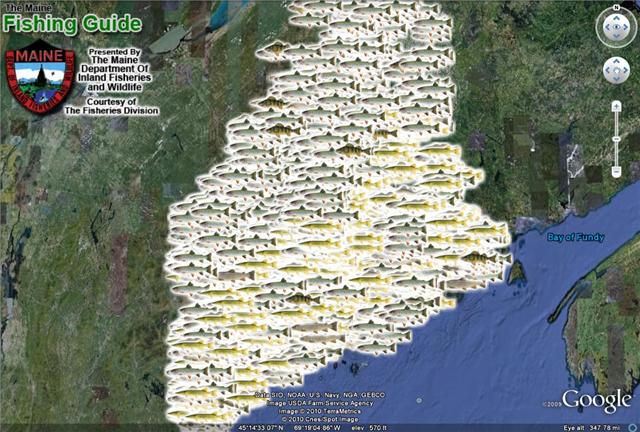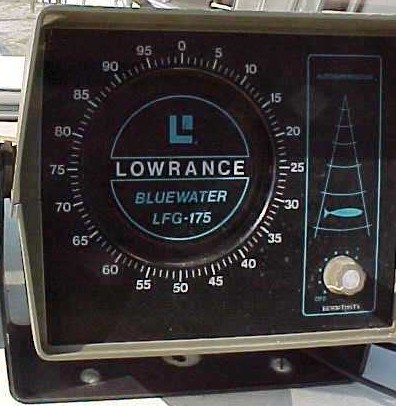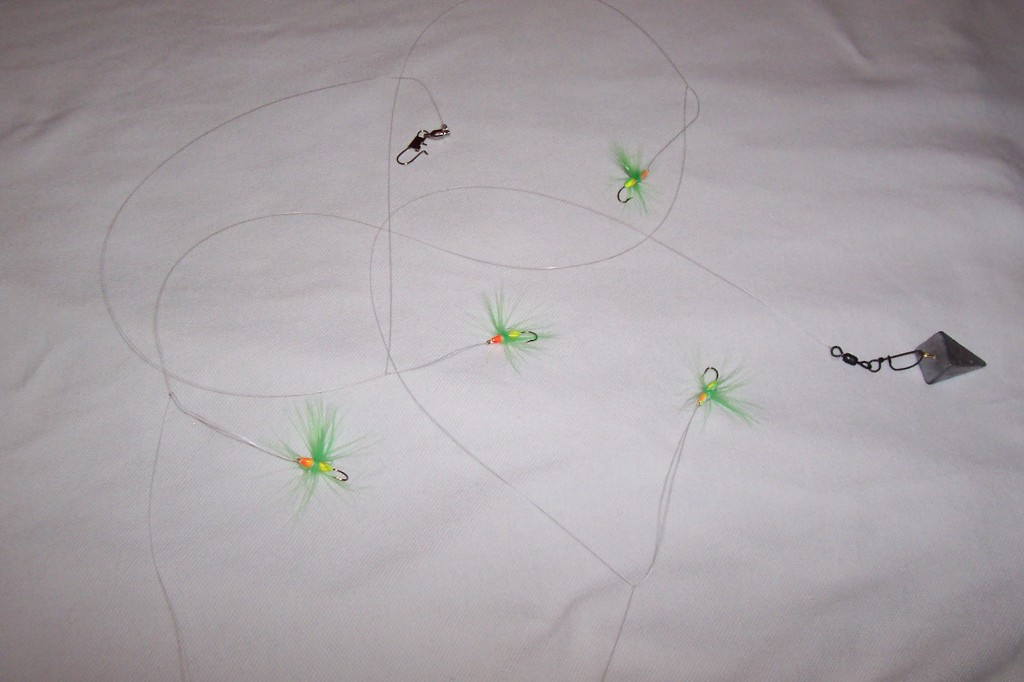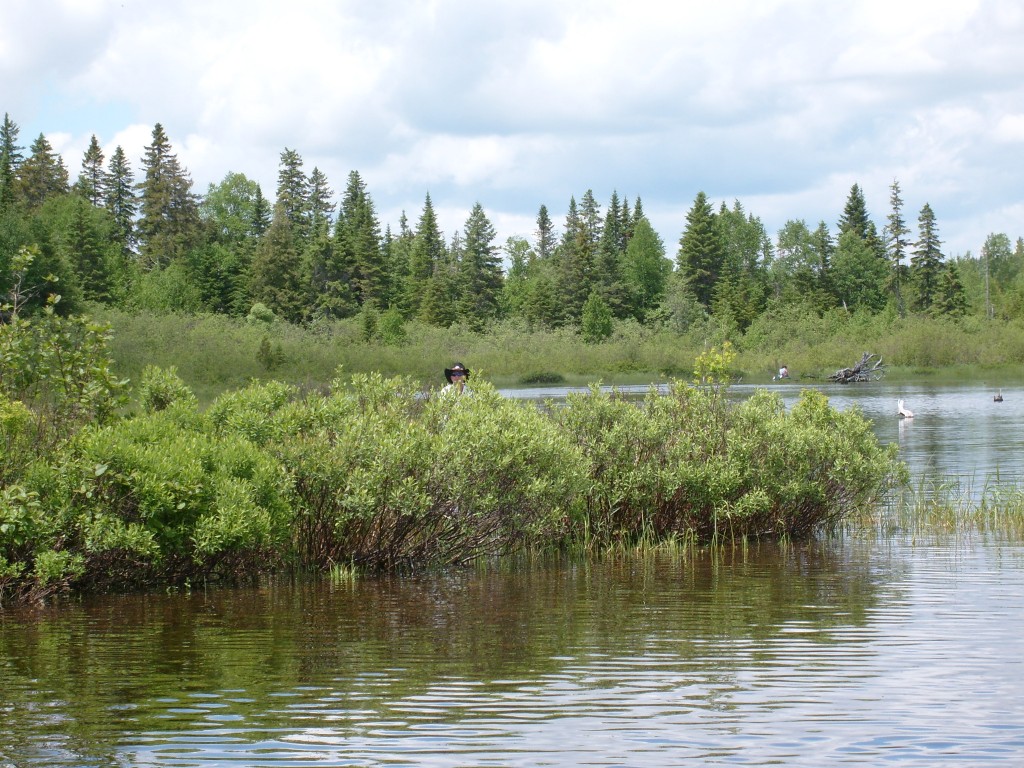I’ll cover that at the end. But first…
Take one Memorial day weekend, add a beautiful weather forecast, and a bad case of cabin fever, and it all added up to the obvious. Time to get the season’s first flies in the water with a trip to Maine’s Moosehead Lake region and the Kennebec River’s East Outlet and the Moose River. Monsters Jimmy, Kristen, myself, and rising pledge Karen were in attendance.
Both rivers are controlled by dams, and the mild winter and early spring meant water levels were already moderate and waters nicely wadeable. That, the holiday weekend, and perfect 70’s weather brought out a lot of fisherman. It also meant that nymphs in the morning, streamers during the day and dry fly’s in the early evening all could all be employed.
There is a lot of pressure on these two spots, and at times, nearly a dozen or more fisherman were within view up and down the river/s. I came up skunked for the weekend. There were plenty of hard strikes, and lots of visuals of fish coming up to the fly for a look in a pool and then backing off—a few clearly in the 18” or more range . Kristen and Karen both hooked up a couple of times with strong pole benders only to have hooks thrown or to break off. Jimmy bagged a brookie. Given the number of lines in the water we encountered over the day and a half there, surprisingly few were having success. There were plenty of occasions to bump into other fisherman and compare notes and it seemed nearly everyone was coming up empty either handed or, a very few, with one…
But,…. there was this one couple. We watched them work the middle of the East Outlet out on the upper reaches of a ridge of river bottom that runs down the middle for a stretch below the dam. Wading out to the middle over a bar to access the middle was quite easy farther down, and plenty of people were out there working the channels on both sides. But, while I was fishing right at the dam, I watched these two work their way up closer to the dam to where they were fighting pretty swift water at thigh depth and greater. Two casts, move, two casts, move, two casts, move….. each move being a laborious struggle against the current. They covered a lot of real estate, moving constantly with great effort…a few casts then move. They hooked up, brought some in, released and moved.
I bumped into them later in the day further down the river and asked how they did, mentioning that they had exhausted me just watching them plow through so much territory in rapid deep water earlier up above. 18 hookups and 5 salmon brought to hand and released, all in the 18″ range was their tally. His advice?…..for that spot anyway, cast and move, cast and move… I went back up later and got out a ways out to where they had been working in the middle, but without a wading staff?… I backed off before getting out to where they had been battling the current… and the big fish.
That being said, we learn from every outing, about specific spots, and return. Oh yes, and the part about catching myself?..
While I was fishing the Moose River, a side gust of wind took a back cast askew and brought my Joe’s Smelt slamming into the knuckle area on my right pinkie finger. Slammed it right in down to the knuckle bone way past the barb,…actually down to the curve of the hook’s shank. I gave the “line around the hook’s curve and yank it out” technique a quick try but it was in sideways and I couldn’t really depress the shank of the hook down against anything (see following video) so, had to do the “advance the hook all the way through” technique and snip off the barb and drag it back out. Keep those hooks sharp people because,…pushing that through any significant amount of flesh is not fun and the sharper the better. Here a good video demonstrating both techniques. Good for minor hookings but for anything major, in something you can’t live without, seek a doctor instead.
Next trip…. Rangely area in 15 days. Stay tuned. Some say it’s the Good Life

